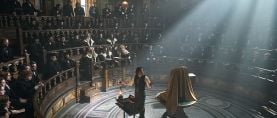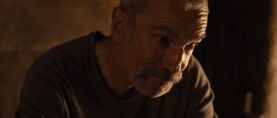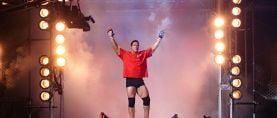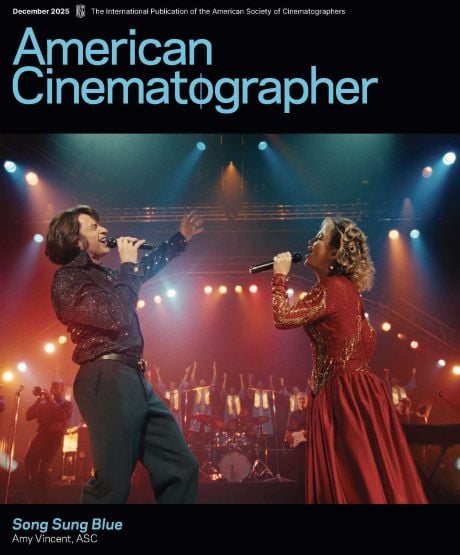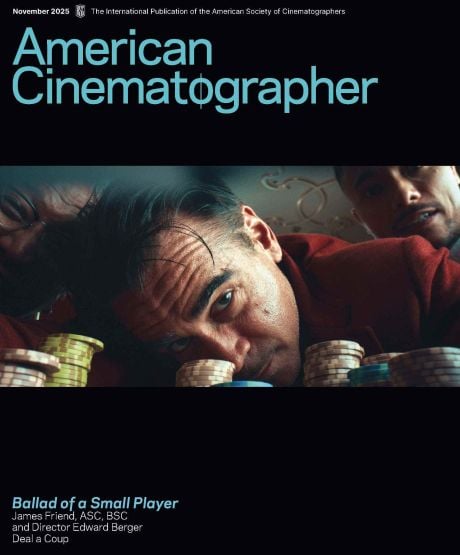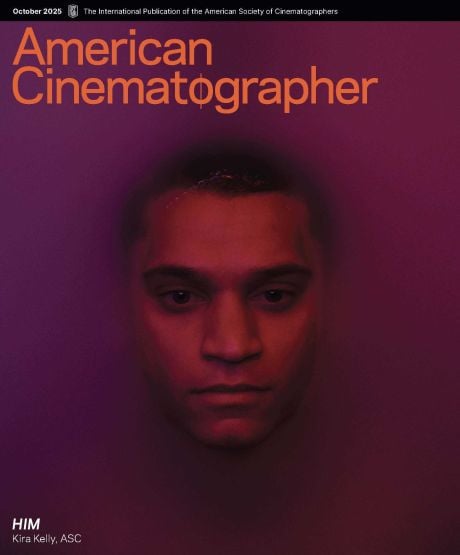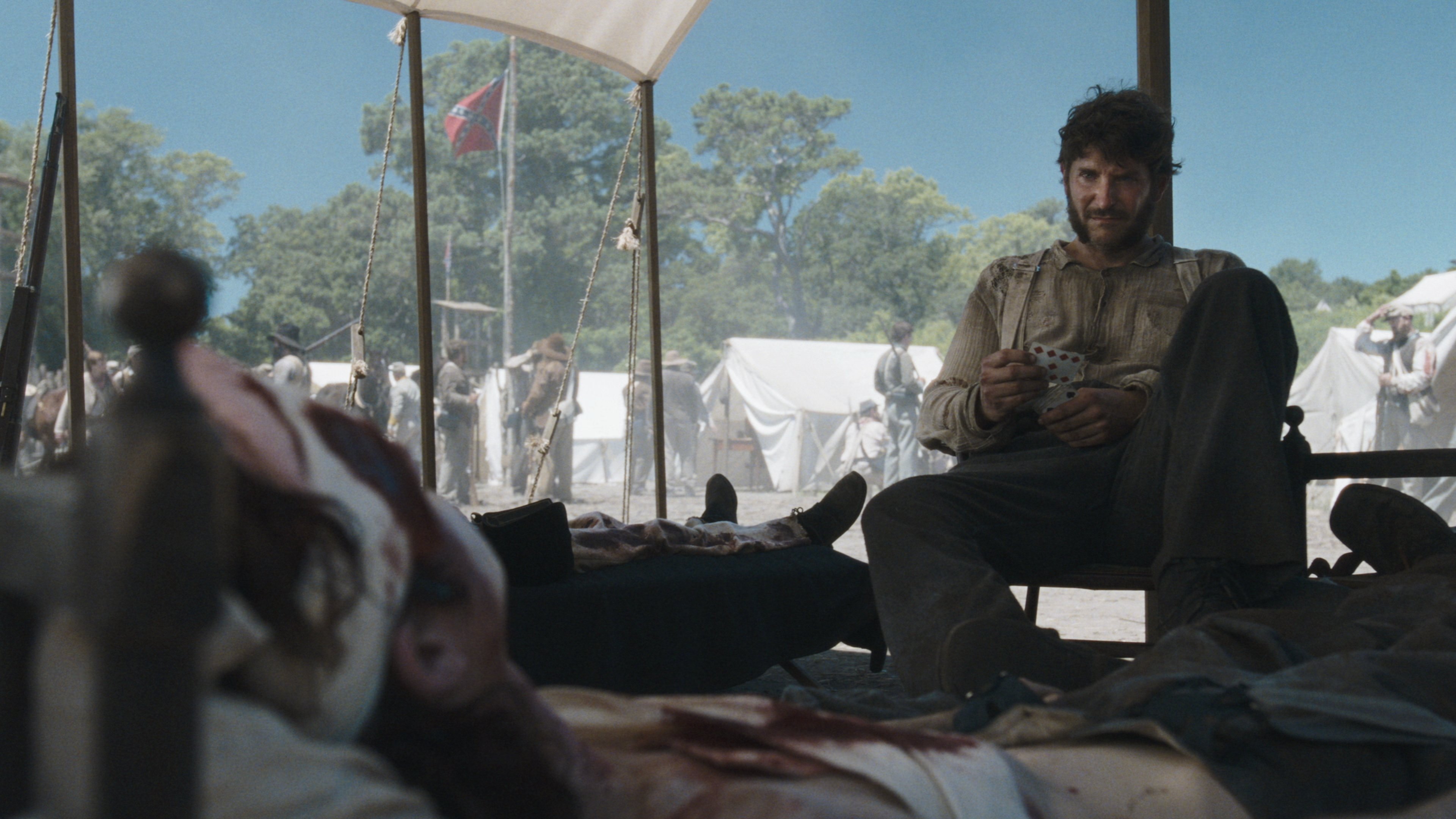
The Cinematography of “Prelude”: Bringing The Righteous Gemstones Into the Civil War Era
The director of photography on the series' Season 4 opener reveals how he helped capture its atypical period look.
The Righteous Gemstones is a series that is largely formed around the opulence and excess of its televangelist characters, with their megachurch, magnificent homes, yachts and monster trucks. Their over-the-top lifestyles unfold in grand, open spaces that are complemented by bold, flashy choices in set design, wardrobe and makeup. I liken the Gemstone family to magpies collecting shiny objects for their nests — so, for the most of my work on the series, I created shots with lots of color, contrast and sheen. However, Episode 1 of Season 4, “Prelude,” explores the inception of the Gemstone family business during the Civil War era — following the journey of distant ancestor Elijah Gemstone (Bradley Cooper) — which allowed me to establish a brand-new look that would immerse the audience in that time.
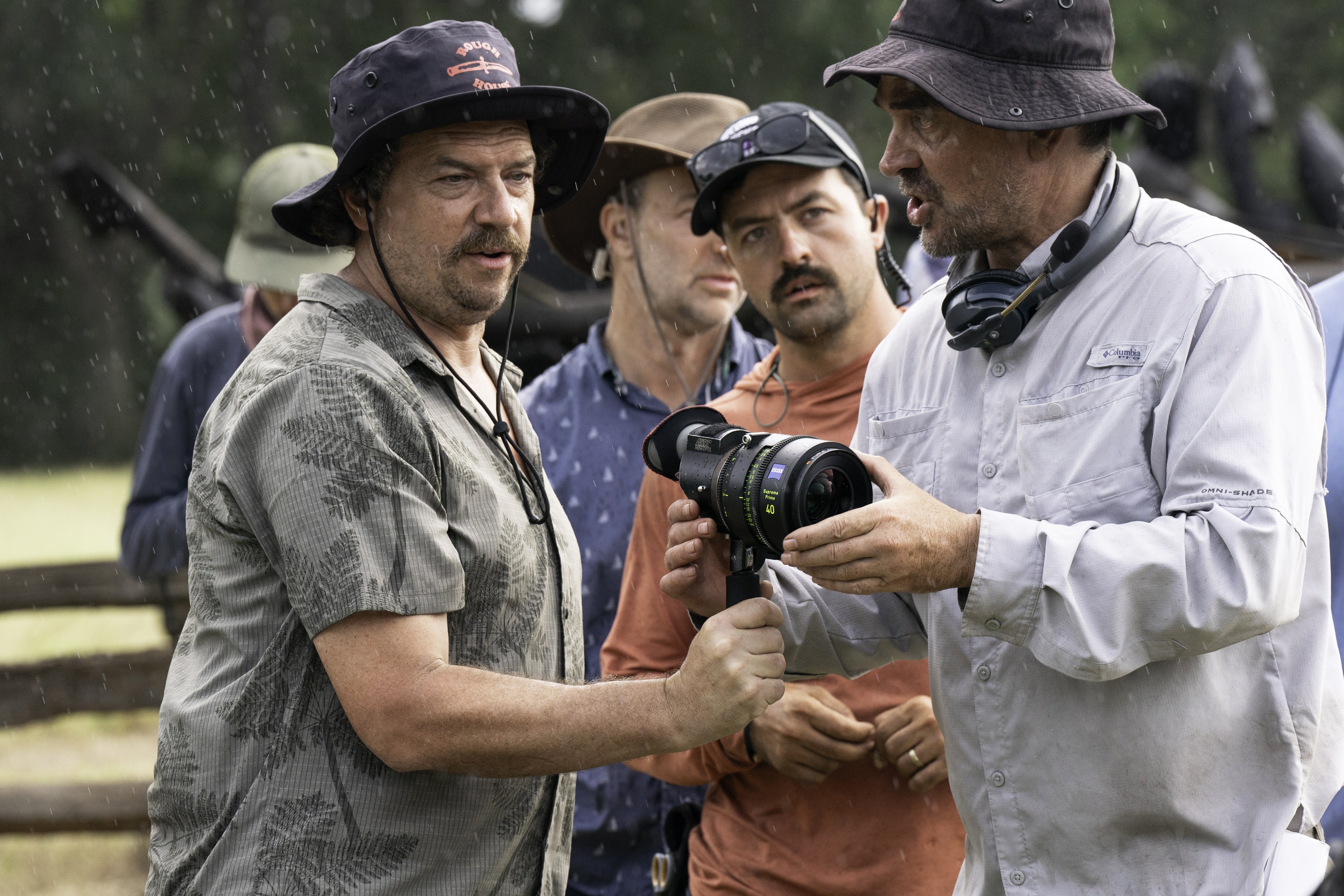
Lighting for Virginia, 1862
The Civil War period we created is gritty, with dark, muted color palettes. But the episode’s separation from the present day could not be based on color alone — I also relied upon atmosphere and texture to create visual interest. We aimed to rely heavily on natural lighting, be it sun or moonlight, or to mimic natural light, whenever possible.
For example, for the sequence in which Elijah Gemstone (Bradley Cooper) is dragging a corpse, we used 2'x120' condors, carrying 4 LRX 18Ks, about a hundred yards outside of the fort walls to replicate the moon's glow. (A rumor on the production says this convinced John Goodman that the scene used only natural light.)
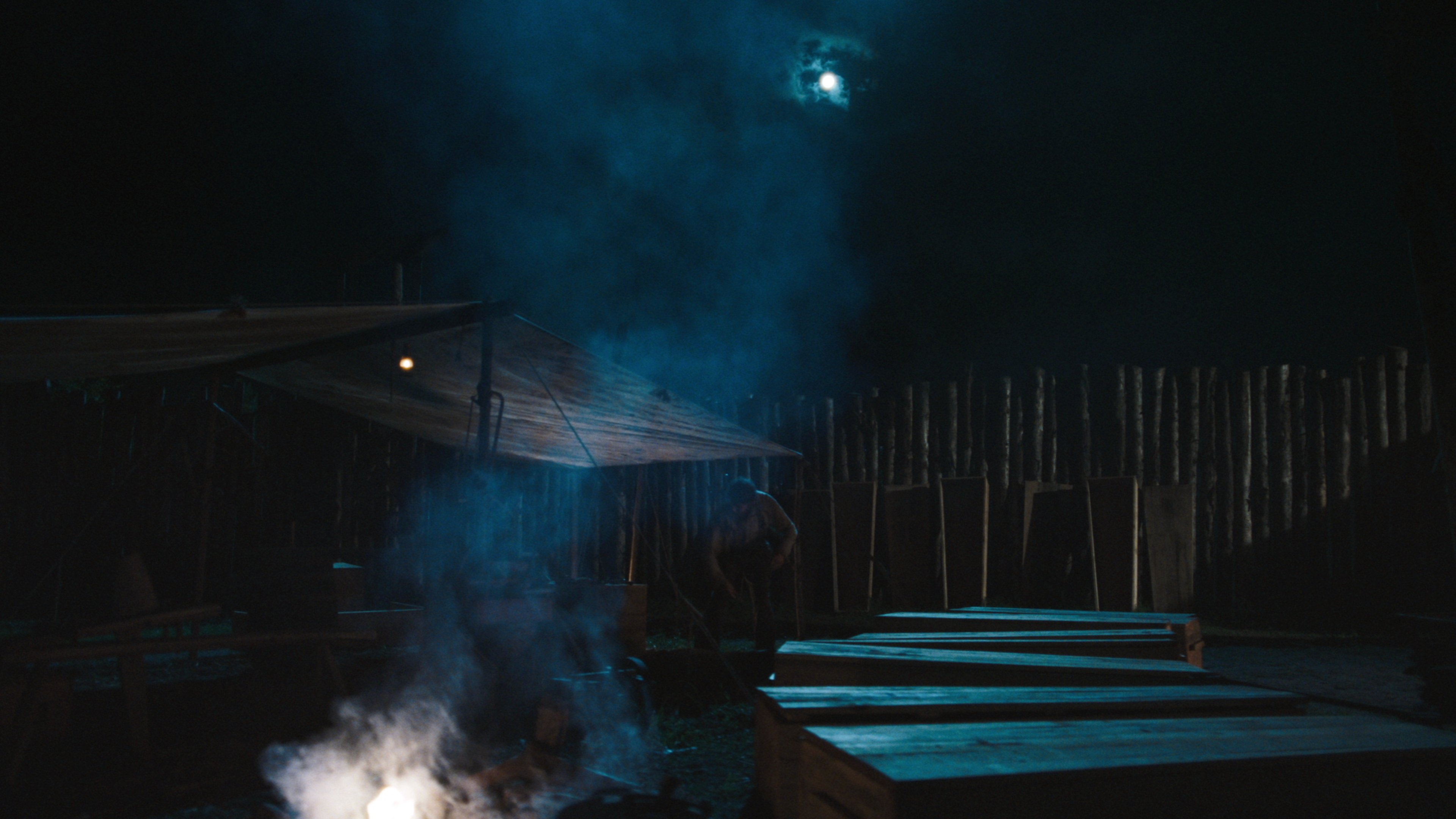
Then, for several scenes that were shot in enclosed spaces such as tents and wagons, I used lighting techniques to create visual depth, such as incandescent chases and candles into mirrors, to keep sets as natural-looking as possible.
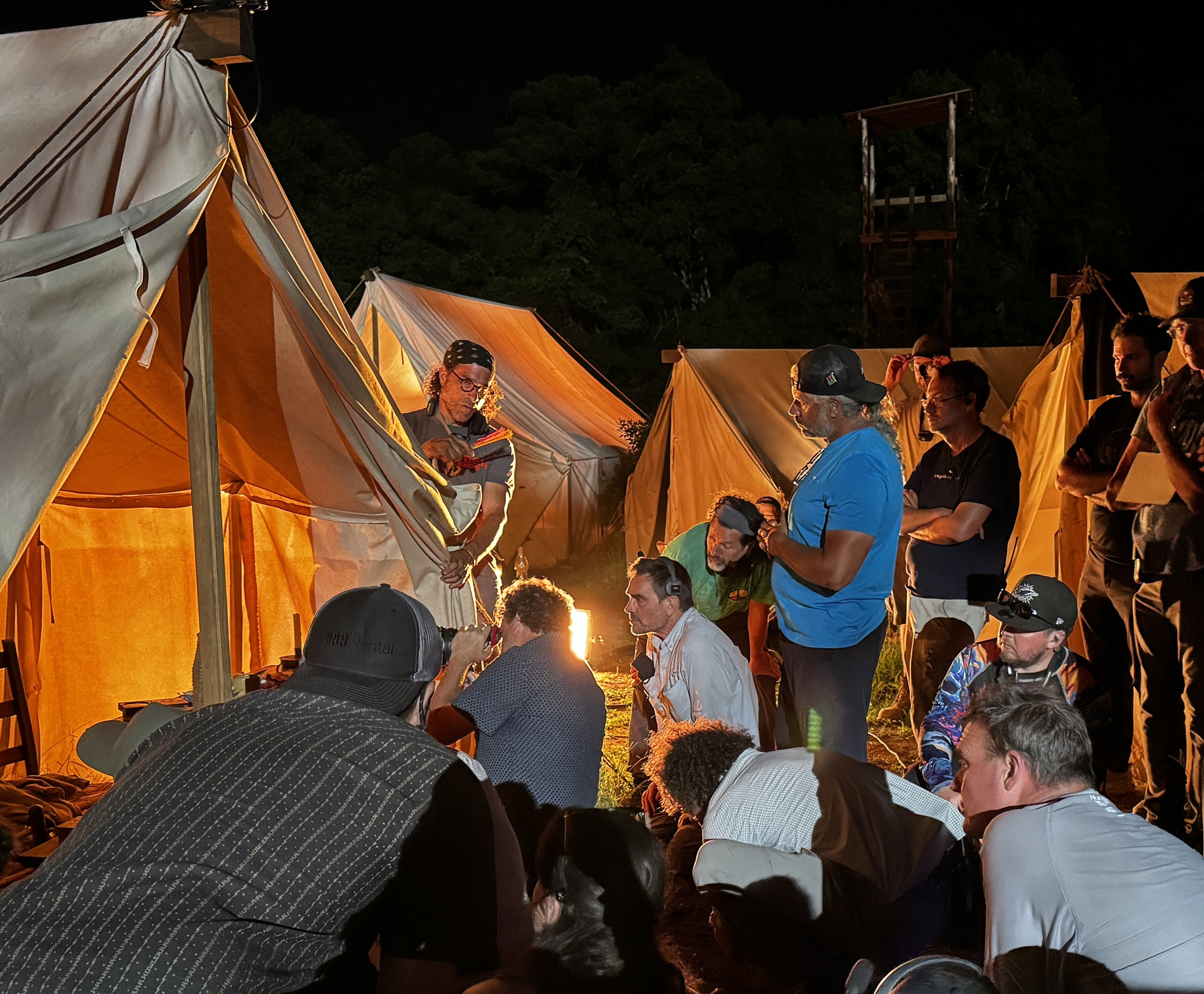
To help light our card-game sequence, I also created a custom light during prep, using three tightly bunched EGT bulbs, which I placed inside of an 18" gem ball. I used those bulbs for output, but also because the filaments are small, and when dimmed, they don’t sing. In a tight space, loud bulbs are a major problem. The ball had an opaque shade that moved independently of the light source, with both on separate pulleys. This enabled us to maintain the illusion that our card-game scenery was lit only by candlelight.
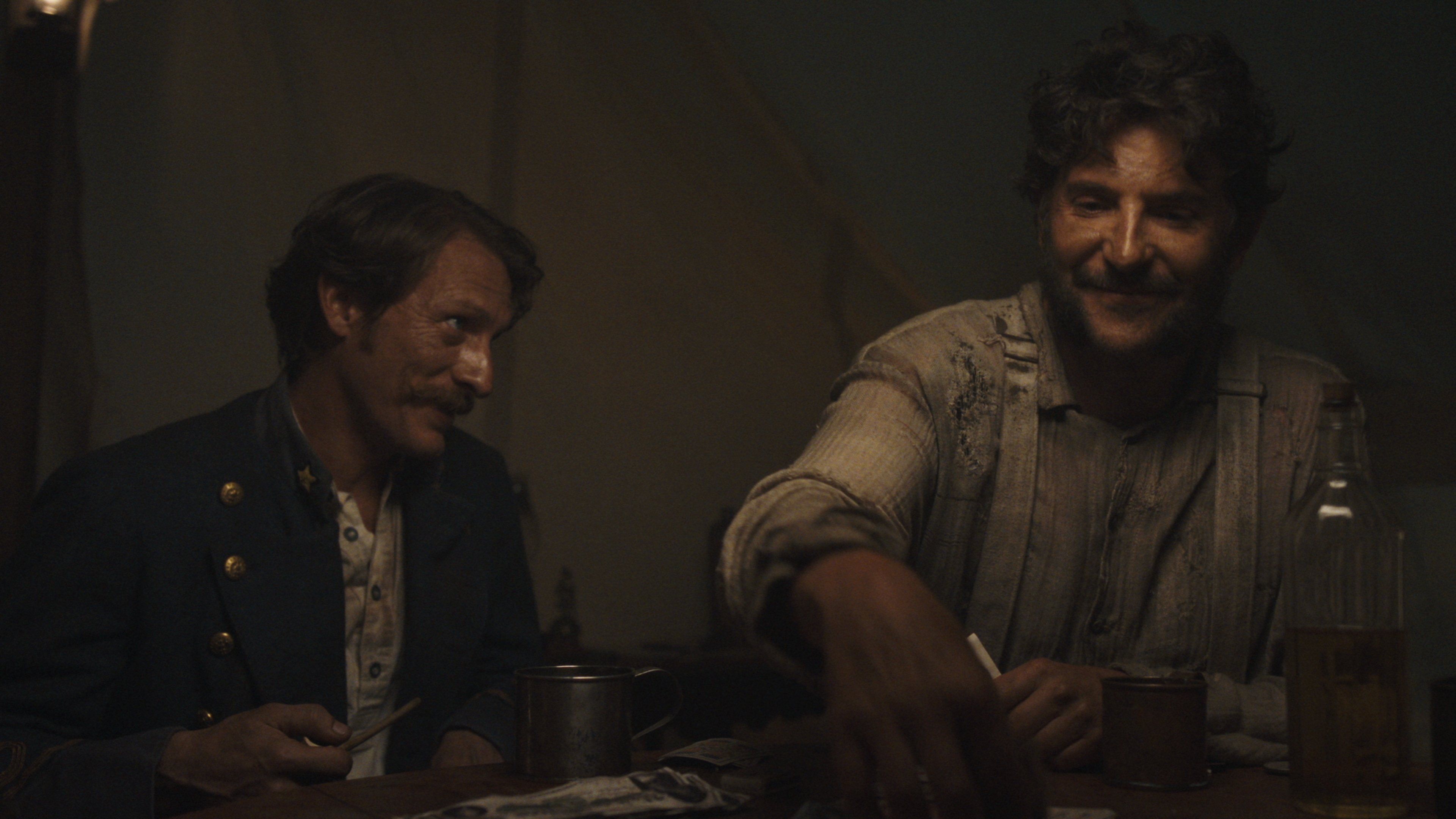
Finally, when shooting in tents at night, we also had lights set up outside to capture the shadows of people passing by, adding a layer of realism. Inside each tent was an Astera AX3 LightDrop on a flicker chase. Outside the tents, we had Creamsource Vortexes and Arri SkyPanel S60-Cs on fire chases, and hidden behind the tents, we used Mole Richardson Baby Softlites to key. For our moonlight, we had four 120’ Condors with 2'x18's per lift, which were used only as back light.

Frames of Reference
One of my biggest influences for the framing I wanted to incorporate in Gemstones was the 1965 British thriller The Ipcress File, shot by Otto Heller, BSC. The movie is unique in that the overs rarely match, and the rules regarding the line are often stretched. I asked my operators to watch it, and when we were shooting, I would even sometimes make notes like, “Can we make this shot more like The Ipcress File?” For this episode, I also used the silver-nitrate still photography, and the films The Outlaw Josey Wales, Glory and McCabe & Mrs. Miller, as references and inspiration for the period we were emulating.
Camera and Lenses
Since “Prelude” had a wide range of locations and situations, from candlelit nighttime card games to battle sequences in broad daylight, I decided to use the Arri Alexa 35, due to its significant advantage in highlight retention and superior low-light performance. The camera handled the bright sun of the day and the dark of the night camp scenes equally well. It is also capable of functioning in extreme heat and high humidity, which was important as we worked with some extreme weather swings from harsh sun to pouring rain.
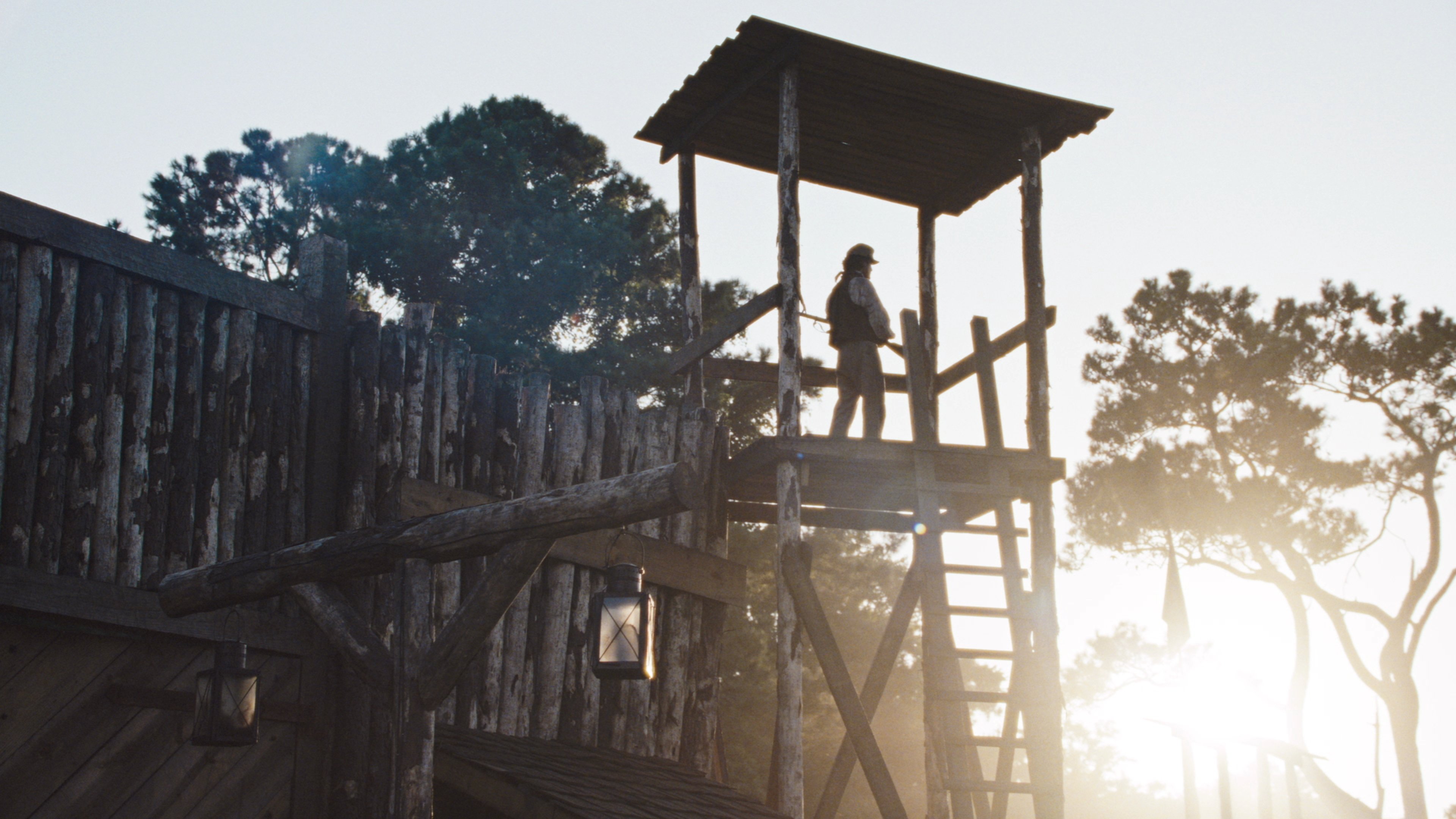
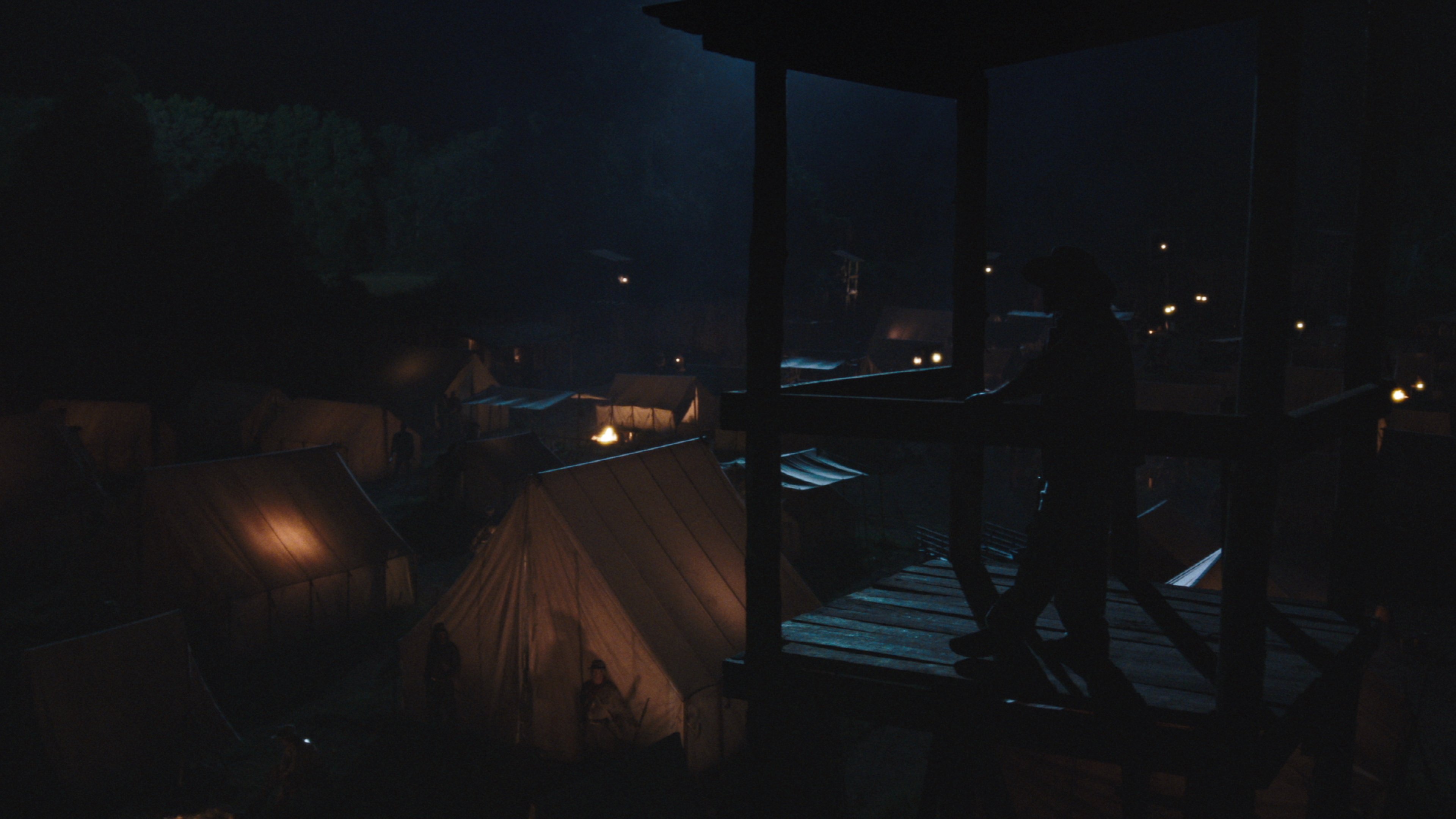
I also used the Zeiss Supreme Primes for the episode, which I valued for their beautiful skin tonality in high contrast and harsh-sun situations. For night scenes and low-light situations, I like the way they render flares, flames and candles. The bokeh of the Supremes is especially pleasing, as they tend to hold detail even in soft focus. This camera-lens pairing was a perfect combination that helped us navigate the episode.
A Tribute to Lives Lost: Recreating the Look of Silver-Nitrate Photography
To best suit the context and style of “Prelude,” we created a montage that references the iconic silver-nitrate photographs of the Civil War era. I researched the format and focal lengths for the silver-nitrate stills, and I used that information for the 35mm conversion and replicated the framing. We set up four different tableaus similar to the photographic references. Our performers were selected to represent a range of ages and physicality and were posed to mimic long-exposure photographs. The montage is also a great testament to the excellence of the hair, makeup, and costumes departments, who made sure every actor — all of whom were background performers — perfectly looked the part.
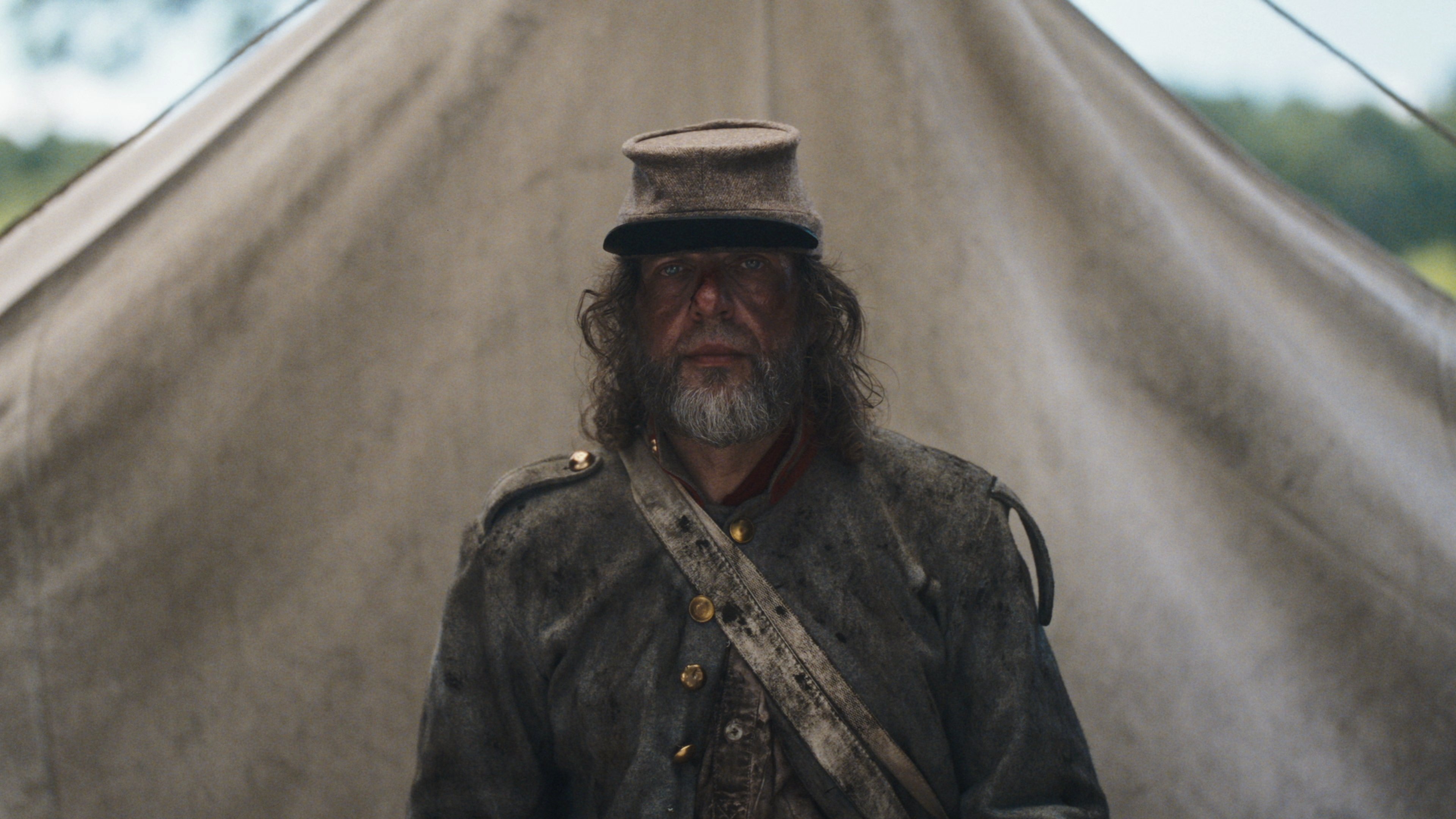
We placed the actors under 12'x12' solids to neutralize direct light, and passive bounces of unbleached muslin for key light. The performers remained still, and the camera was overcranked at 60 fps to accentuate the effect. I worked with Drew Geary from Company 3 for the color correction, and we employed a number of film-processing techniques he designed to give “Prelude” its unique quality. The editor, Justin Bourret, was immediately onboard when I explained what we wanted to achieve; he arranged the shots in a beautiful, somber sequence that served as a tribute to the lives lost in the Civil War, which the audience can see in the episode.
Capturing Carnage Through Camera Movement
“Prelude” also features a wide range of action sequences — all of which were achieved through my collaboration with our stunt coordinator, Corey Demeyers. For a shot in which the camera moves through the battlefield, I knew it needed to be a single-camera setup to showcase the battle from only one point of view, with the camera being the front line of the opposition. As the battle was shot from morning into afternoon, we had the soldiers run from the south toward the camera to maintain backlight. We divided the scene into a series of actions, each to be shot independently.
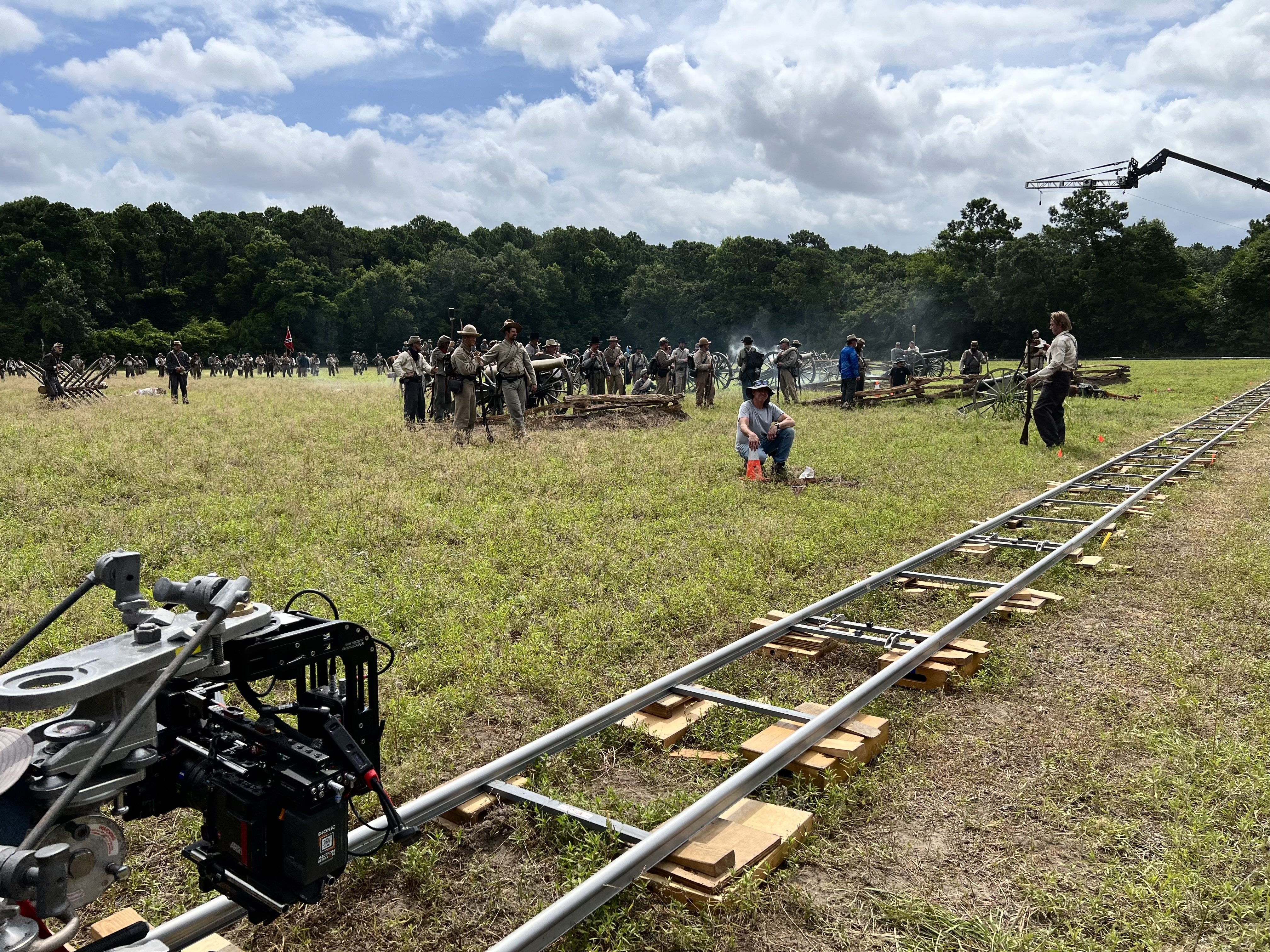
First, we had soldiers charging toward the camera; then, we shot the horses charging; the next shot had cannons firing; and the final action was a stuntman soldier blown 30 feet in the air, a shot which required a sophisticated cable rig, which, together with the dolly, was the only setup we used for the entire sequence. To accurately show the scale of the battle, we laid about 300 feet of dolly track that ran parallel to the action, and our dolly grip, Philip Dann, did a full pass for each set of action.
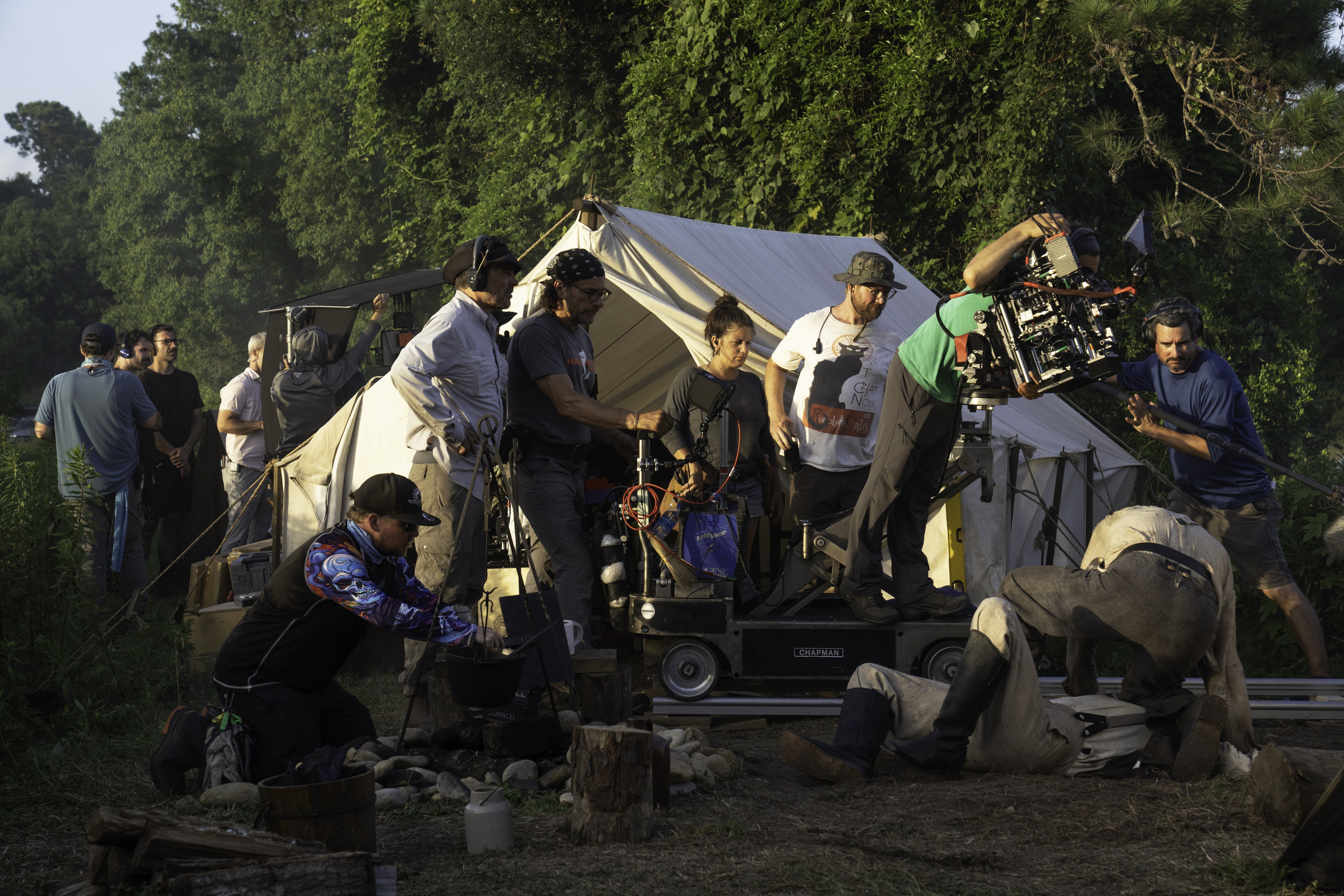
We were able to complete a full rehearsal the day before the shoot, which helped our choreography go even smoother when we shot it. The day of each run was completed in two or three takes and the entire battle scene was completed in six or seven hours. Using a single camera on the dolly facilitated the VFX layering in post — handled by visual effects supervisor Bruce Branit — bringing the entire sequence together.
“Prelude” was both a physical and creative challenge: The episode was location-based, with only a single day of studio coverage — and on top of that, we were constantly subjected to the elements. We were also operating on a tight, nine-day timeline, leaving little to no room for error. We had to be very creative with presetting and camouflaging cameras, lights, cables and grip equipment with nets, brushes and greens, to ensure that we would capture everything in a limited number of takes. For example, our ambush sequence took a lot of time to reset, so we hid the camera inside the wagon to catch Bradley’s reaction when the soldier in front of him is shot, all while the handheld and Steadicam operators were capturing the chaos of the assault. It’s this kind of planning that allowed us to deliver the result on such a tight timeline.
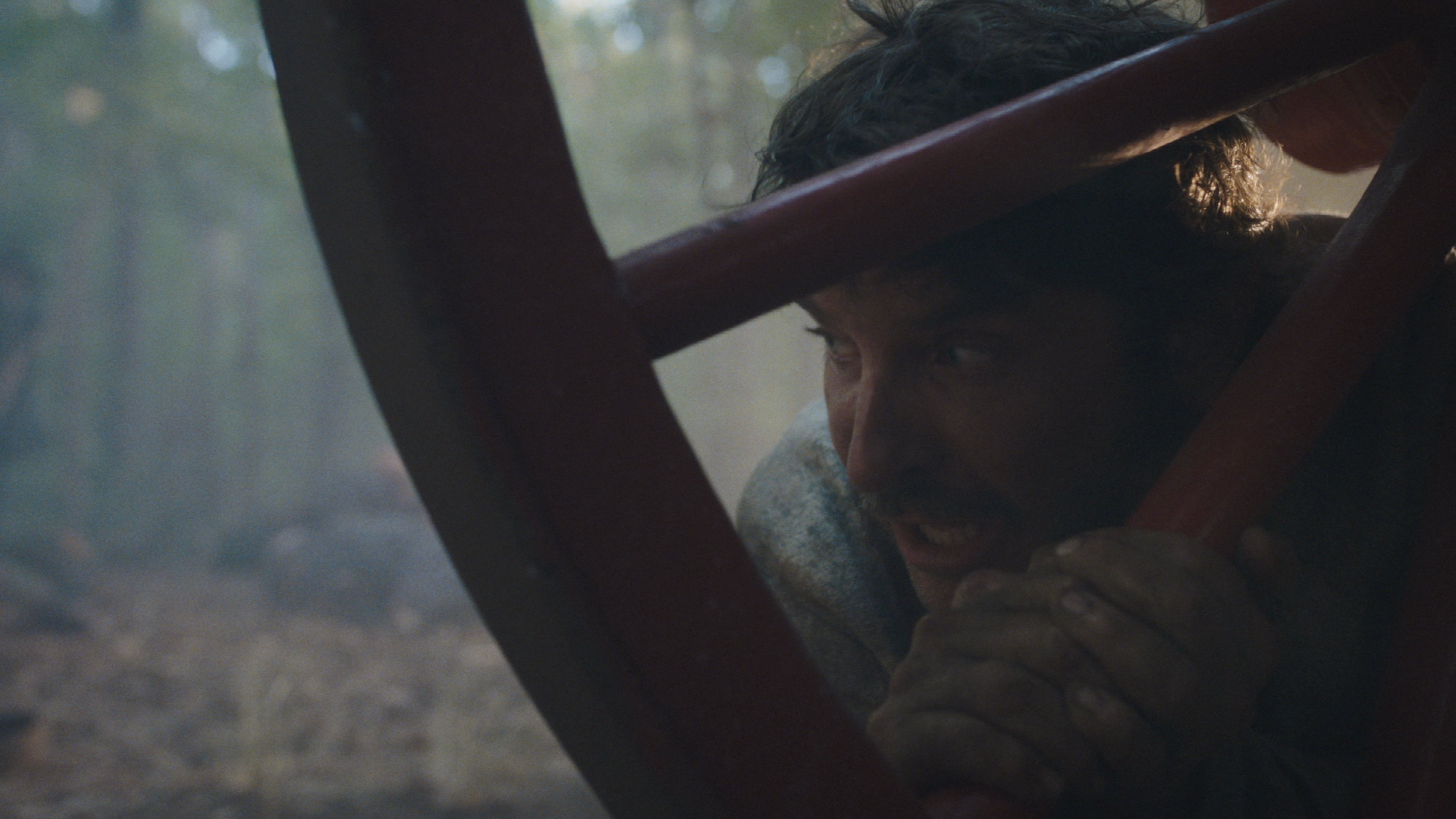
Nothing Is a One-Person Show
Before working in the camera department, I began my career in the electric department and became a gaffer. I spent those years accumulating real golden nuggets of technical and professional information that one can only get on the job, which afforded me a versatile skill set as a cinematographer. I forged strong work relationships on each job, with many people I met becoming mentors and even friends.

These experiences encouraged me to advance and refine my lighting and framing ideas, and to develop a management style that promotes others to build upon their skills, as well. Nothing is a one-person show. It is a collaboration of crafts, and effective communication between individuals and their respective departments is crucial. This way of working fosters proper planning and preparation to limit inherent chaos and get the job done.
The Righteous Gemstones is now available to stream on HBO Max. Images courtesy of HBO and the filmmakers.
